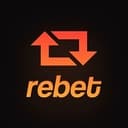The world of tennis betting in 2025 offers bettors a unique opportunity to profit. Tennis runs nearly year-round across ATP, WTA, Challenger, and ITF circuits – meaning lots of matches and, importantly, plenty of soft lines if you know where to look. Unlike heavily bet sports, tennis (especially lower-tier events) often flies under the radar for sportsbooks, resulting in less efficient odds and exploitable discrepancies. In this guide, we’ll focus on the top-down betting approach – a market-driven strategy that sharp bettors are using to beat tennis lines. We’ll explore how to read market movement, capitalise on opening vs. closing line differences, understand the role of limits, and target data inefficiencies in smaller tennis markets like Challengers or lower-profile WTA tournaments. Finally, we’ll show how to tie it all together using Betstamp Pro’s new premium tennis odds screen to spot line moves, consensus prices, and off-market odds in real time.
Whether you’re just starting out or already betting regularly on tennis, this guide will walk you through sharp strategies step by step. And since these tactics focus on tennis, having a grasp of how betting works — including bankroll management and odds formats — can help make sense of the tennis-focused approach, especially if you're familiar with the principles behind betting strategies as outlined by BettingRanker.

Why Tennis Betting Offers Sharp Edges in 2025
For bettors seeking an edge, tennis can be a goldmine of inefficient markets. There are a few reasons for this:
Niche Markets & Less Attention: Compared to major sports, tennis (outside of the Grand Slams) doesn’t attract as much betting volume in certain regions, so sportsbooks devote less resources to perfecting those lines. As one sharp tennis bettor noted, tennis is “not that popular in the US” and thus many lines – especially on props or Challenger matches – were “a lot less efficient” due to fewer people betting them. Fewer sharp bettors and models hammering the odds means soft lines last longer, giving you a window to strike before the market corrects.
Huge Number of Matches: Tennis tours host matches every day across the globe. Bookmakers must post odds on everything from an Australian Open final to a Tuesday afternoon Challenger in Lima. It’s impossible for oddsmakers to be perfect on all of these. Sharp bettors often find large discrepancies in lower-tier matches – for instance, one sportsbook might list a player at +150 while others have +175 (or vice versa). Spotting these outliers and betting the generous number is a fundamental sharp tactic. In one case, a tennis bettor discovered a prop market where “the odds on one site were just totally different from on other sites”, an obvious mispricing to exploit. An odds screen (more on that soon) makes these easy to catch.
Information Gaps: The tennis world isn’t as thoroughly covered by mainstream media as, say, the NBA or NFL. Early injury news, last-minute withdrawals, or even fatigue from yesterday’s marathon match might not be broadly advertised – but if you catch wind of it (through Twitter, niche forums, or local news), you can beat the book to the punch. Sportsbooks are often slower to adjust tennis lines because the info isn’t hitting their models quickly. This information asymmetry is something sharp bettors thrive on: for example, if a star player is carrying an injury that only a few insiders know, the odds on their next match might be way off. Those in the know will hit the underdog, and the line will eventually move hard. If you’re watching the market, you’ll see that the steam moves and can jump in before the odds fully settle.
Less Complex Modeling (but Mispriced Derivatives): Tennis matches are relatively straightforward to model at a basic level – it’s one-on-one, with clear stats like serve percentages forming the core of win probabilities. Some pros say tennis is one of the easiest sports to model fundamentally (two players, limited key variables). This means the main moneyline odds are often efficiently priced by sharp sportsbooks. However, many bookmakers auto-generate derivative markets (like set spreads, game spreads, or totals) using simple formulas (often assuming a normal distribution of outcomes) that don’t always hold true for every matchup. A sharp strategy (used by our tennis “prodigy” guest on the Circles Off podcast) is to trust the market’s moneyline as accurate, then find errors in the related lines. For example, if the favourite’s moneyline implies a 65% win chance, the “correct” spread and total might be specific values, but if a book lazily uses a generic formula, the total or spread could be misaligned for that particular match. Identifying those gaps (say, a total games line that’s too high for a matchup of big servers, or a spread that doesn’t account for a player’s tendency to play tiebreaks) can yield great bets. In other words, tennis offers plenty of hidden value for those who look beyond the surface, especially in smaller markets and prop/derivative bets.
Top-Down Betting in Tennis: What Is It and Why Use It?
The top-down approach is the centerpiece of our strategy guide because it flat-out works – especially in sports like tennis with uneven information flow and many soft books. Top-down betting means basing your bets on market signals and line movements rather than on your personal opinions or homemade power ratings. You’re effectively using the wisdom of sharp bettors (as reflected in line moves) to guide your action. As one expert put it, “the whole philosophy of top-down is built off of picking the off-market price” – finding a line that’s higher or lower than it should be and pouncing on it.
When that off-market price moves into line with the rest of the market, your edge disappears, so the top-down bettor’s motto is “grab it before it’s gone.” Speed is paramount. In tennis betting, this often means watching the live odds screen for sudden changes – if you see a player’s odds jump from, say, -111 to -143 at a market-making book, that’s a strong signal that sharp money hit that side. A top-down bettor will immediately look to other books still offering -111 and bet it before they adjust. You’re effectively piggybacking on the sharp action that caused the move.
Why do this? Because if sharp syndicates or insiders are betting a tennis line, they likely know something (a matchup edge, an injury, weather affecting conditions, etc.) that you might not. By following their move, you align yourself with the smart money. In the long run, consistently betting off-market prices and beating the big line moves results in winning betting slips. In fact, it’s been noted that a skilled top-down bettor could “very easily win” long-term just by doing this. Importantly, top-down isn’t just blind chasing – the best practitioners also ask why a line moved. For instance, if you see heavy steam on an underdog in an ITF match, it could be injury info; if a total is getting hammered downward, maybe weather or fatigue is a factor. Understanding the reason helps you gauge if the move is legitimate and sometimes even anticipate moves (e.g. you learn to recognise patterns, like odds on Player X always crash if they played late the night before).
One huge advantage of top-down betting is you don’t need to spend hours crunching tennis stats or watching film on players. You’re letting the market do a lot of the work for you. This makes it perfect for bettors who maybe don’t have a sophisticated tennis model or deep knowledge of Challenger-level players – if you’re willing to put in the time monitoring odds, you can profit from others’ expertise. As a bonus, this strategy naturally enforces discipline: you’re focusing on numbers and value, not team or player loyalties. Bet numbers, not names. If the price is wrong, you bet it, whether it’s a household-name Grand Slam champion or a qualifier ranked 250th. In tennis betting, objectivity is king, and a top-down approach keeps you objective by anchoring decisions to market data.
With Betstamp PRO—the most advanced top-down betting odds screen in the market. You will find daily WNBA betting edges with ease, allowing you to scale your profits long-term. Click the banner to book a free demo.
Timing the Market: Opening Lines, Closing Lines, and Limits
Every tennis match has a life cycle in the betting markets: opening odds, line movements as bets come in, and the closing line right before the match starts. Understanding this cycle is key to sharp betting.
Opening Lines: These are the first odds posted, often many hours (or even days, for big tournaments) before a match. Early lines are typically based on the bookmaker’s model with minimal betting input. They can be quite soft and off-target, especially for lower-profile matches where oddsmakers might not have deep insight. The catch is that books protect themselves with low limits at openers – you might only be allowed a few hundred dollars (or less) on a Challenger match opening line.
Line Movement & Limits: Sportsbooks increase betting limits as the match nears and they gather more information (and volume). Sharp action can move lines at any time, but the biggest moves in tennis often happen closer to match time – for instance, when limits jump a few hours before the first serve, or when important news (injury, lineup change in a team event, etc.) breaks. Top-down bettors should pay special attention to these periods. If you see, say, Pinnacle or another market-making book suddenly shift odds at 10am for a 1pm match (often coinciding with a limit increase or fresh news), that’s your cue. Grab your odds screen and look for any book that hasn’t moved yet. Those “slow” books are your targets. By reacting quickly, you can secure a bet at a great price that will likely beat the closing line. This is the essence of top-down tennis betting: identify the move, and beat the crowd to the remaining value.
Closing Line & CLV: The closing line is the final odds just before the match starts. It’s considered the most efficient price, as it incorporates all the late money and information. A core tenet of sharp betting is the pursuit of Closing Line Value (CLV) – consistently betting at odds better than the closing odds. If you can regularly get prices that beat the close, you’re finding market inefficiencies before they vanish. Over the long run, positive CLV is highly correlated with being a profitable bettor.
The Role of Limits (Why Books Might Ban You): It’s worth noting that consistently beating the market can draw unwanted attention from sportsbooks. Recreational or “soft” books especially do not like bettors who always win or always beat the line. If you’re regularly exploiting their stale tennis lines, don’t be surprised if one day your account limits get slashed to peanuts or even closed altogether.
The ideal scenario for a tennis bettor is: catch mispriced lines early (or quickly when they move), and consistently beat the closing number, all while not tipping off sportsbooks that you’re a sharp. It’s a bit of a cat-and-mouse game, but the rewards are worth it.
Sharp Tactics for Tennis Betting Success
Now that we’ve covered the concepts, let’s highlight some actionable sharp tactics you can apply in your tennis betting:
Exploit Lower-Tier Tournaments: Focus on Challenger and ITF matches or early-round WTA/ATP matches in smaller events. These markets are often price-inefficient. Sportsbooks sometimes copy odds from one another or use basic models, resulting in lines that sharp individuals can pick apart. Fewer eyes on these matches means that if you do your homework (or watch the market), you’ll catch mistakes.
Line Shop Relentlessly: It can’t be overstated – always get the best odds available for your bet. Tennis moneylines and spreads can vary significantly across books (due to timing or juice differences). A top-down bettor, by definition, is scanning for the best price. Use an odds comparison tool or odds screen to instantly see who’s got the highest underdog price or the lowest favourite price.
Follow Market-Moving Books: Identify a couple of sharp “market-maker” sportsbooks for tennis and keep an eye on them. Books like Pinnacle (and exchanges like Betfair, where available) tend to set lines that lead the market. If you notice those odds start to shift, consider it an alarm bell. Often, other books will lag by a few minutes or more, especially in tennis markets that aren’t heavily traded. By the time the slower book updates, the value might be gone. Staying glued to a live odds screen that includes these sharp books allows you to react in real-time to any move.
Leverage Information & News Quickly: Even as a top-down bettor, it helps to be plugged into tennis news. Follow reliable Twitter accounts for tennis journalists, injury reports, or even bettors who specialise in tennis. Sometimes you might catch a nugget of info (e.g., a player tweaked a hamstring in practice) just before it reflects in the odds. If you’re confident in the info, you can bet ahead of the move – or if not, at least be ready when the line starts to move. Tennis also has unique scheduling spots (like a player who wins a late match and has to play again the next morning) that you can anticipate the market adjusting for. Being aware of these situational angles can only help.
Using Betstamp PRO’s Tennis Odds Screen to Gain an Edge
To successfully execute a top-down strategy in tennis, a real-time odds screen is your best friend. Betstamp Pro’s new premium tennis odds screen is built for sharp bettors and is a game-changer for anyone looking to bet smarter on tennis. Here’s how it can elevate your strategy:
All Odds in One Place: The Betstamp PRO screen aggregates live odds from 100+ sportsbooks (including sharp offshores and local books), so you can instantly see the landscape for any tennis match. No more opening 10 tabs or relying on slow odds comparison websites. The screen updates in real time, so if a line starts to steam at a sharp angle, you’ll see it move on the screen immediately.
Identification of Line Moves: Betstamp PRO not only displays odds, but also highlights movements. This way, you won’t miss sudden shifts. Instead of staring at numbers all day, trying to spot changes, the tool does the heavy lifting.
Consensus “True Line” & Highlighted Edges: One of the premium features of Betstamp PRO is its algorithmic consensus line. The software analyses odds across the market to calculate a “true line” for each match or bet. Essentially, the expected fair price is given all the available information. It then shows you which books are off from that consensus, providing you a massive edge over the books and other bettors.
Betstamp Pro’s tennis odds screen is like having X-ray vision on the betting market. It surfaces the key info you need (line moves, consensus, outliers) and does it fast. This allows even recreational bettors to act like a seasoned sharp, capitalising on opportunities that others miss. It’s no surprise that many pro bettors call an odds screen a must-have – it’s the engine that drives the top-down betting approach.
Conclusion: Betting Tennis the Sharp Way
The 2025 tennis betting landscape is ripe with opportunity for those who embrace a sharp, market-driven approach. By focusing on top-down strategies – reading the market’s signals, pouncing on off-market odds, and respecting the efficiency of closing lines – you align yourself with the winning side of the betting equation. Tennis, with its myriad of matches and often-overlooked markets, provides the perfect arena for finding an edge if you stay disciplined and informed. Remember to exploit the inefficiencies in smaller tournaments, always get the best of the number, and be mindful of sportsbook limits as you grow. Equip yourself with the right tools (like a quality odds screen) and bet with your head, not your heart.
Scale Your Winnings With Betstamp PRO
Betstamp Pro saves you time and resources by identifying edges across 100+ sportsbooks in real-time. Leverage the most efficient true line in the industry and discover why Betstamp Pro is essential for top-down bettors.
Limited number of spots available! Apply for your free 1-on-1 product demo by clicking the banner below.


















